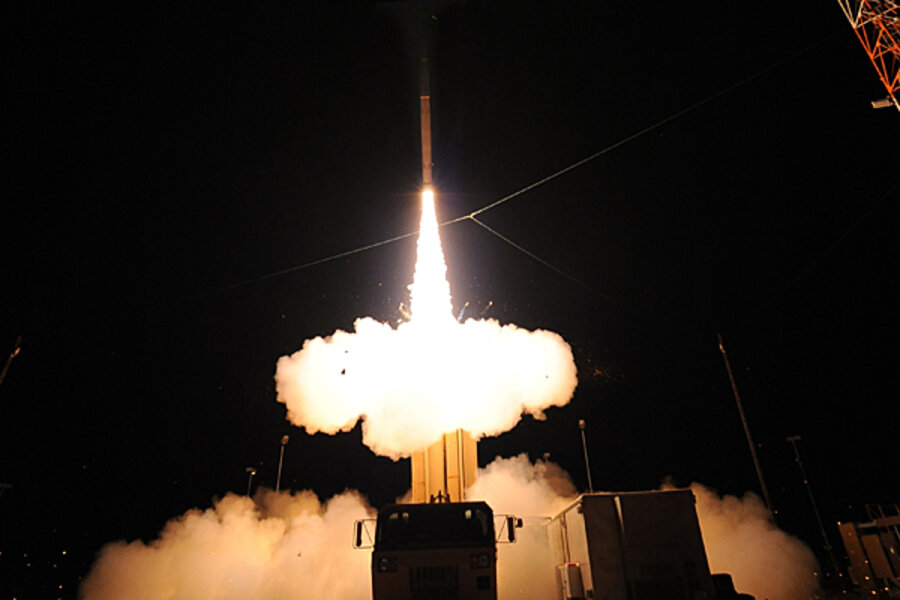US missile defense satellites pass big test
Loading...
A pair of experimental U.S. missile defense satellites has passed a series of vital tests in space, spotting three missile launches and successfully relaying data about their trajectories to observers on Earth.
The two satellites make up the Space Tracking and Surveillance System (STSS) and were built by Northrop Grumman and Raytheon for the U.S. Missile Defense Agency as a demonstration of technology to protect the United States from enemy missiles. The $1.5 billion STSS Demonstration mission was launched in September 2009.
The STSS's most recent test, the June 28 observation U.S. Missile Defense Agency rocket launch during an intercept test, was "the most thorough indication yet of the space-based sensor's capabilities," Northrop Grumman officials said in a statement.
During that test, the STSS satellites detected the liftoff of a target missile mimicking an enemy launch as part of a test of the Army's Terminal High Altitude Area Defense (THAAD) missile, which successfully intercepted the "enemy" target vehicle. [Most destructive space weapon concepts.]
The STSS satellites are designed to pave the way for a future constellation of missile defense satellites. Each of the two satellites is equipped with a launch sensor that picks up a signal when a missile fires its initial boosters, as well as a tracking sensor that follows the infrared signature of the missile through its flight.
"It is seen as the precursor to a full-on operational system," Northrop Grumman spokesman Bob Bishop told SPACE.com. "It is a demonstration program for space based acquisition and tracking."
In a June 16 test, the STSS satellites monitored the launch of an Intercontinental Ballistic Missile (ICBM) by the U.S. Air Force.
The Air Force's ICBM Minuteman Missile traveled about 4,800 miles in roughly 30 minutes before it hit a target near Kwajalein Atoll in the western chain of the Marshall Islands. The STSS flawlessly detected and tracked the missile during that trip, Northrop Grumman officials said.
"Another reliable performance by the STSS Demonstration program satellites is an encouraging development for the nation's missile defense system," said Gabe Watson, vice president of missile defense and missile warning programs for Northrop Grumman's Aerospace Systems office. "The capability demonstrated by these space-based sensors is a strong indication of the value this system brings to missile defense."
An earlier June 6 test also saw the defense satellites detecting and tracking an interceptor rocket launched by the U.S. Missile Defense Agency. The STSS satellites tracked the journey of a two-stage Ground-Based Interceptor and relayed data down to ground stations.
Overall, the three tests represented progressively more realistic challenges for the STSS satellites.
The two satellites observe a missile at different angles, with one glimpsing the vehicle against the backdrop of the Earth, and the other observing the missile with space in the background. Combining those two views increases the STSS satellites' accuracy, Bishop said.





